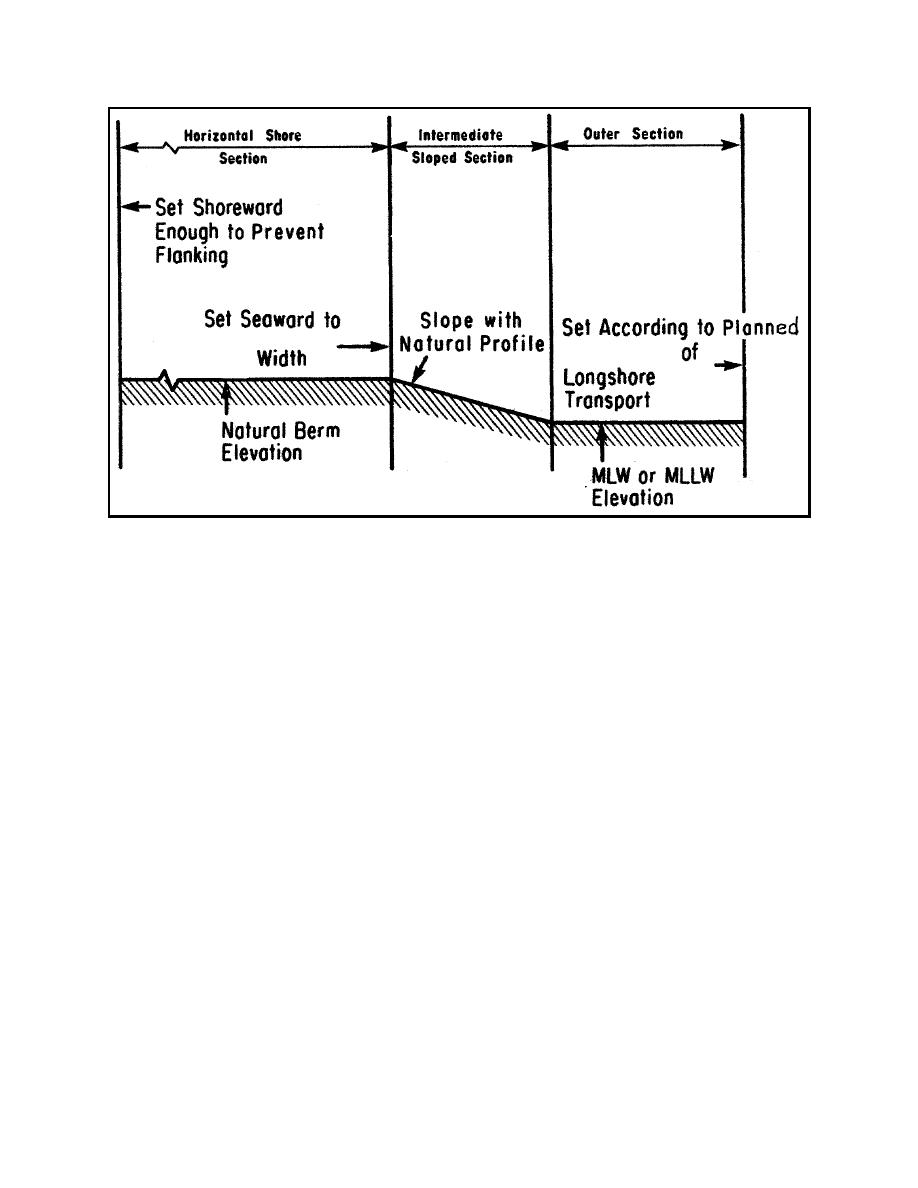
EM 1110-2-1100 (Part V)
31 Jul 2003
Figure V-3-31. Typical groin profile with sloping section
Overton, and Fisher (1998). See also Dean (1993; 1996) for detailed analysis of terminal structures at the
ends of littoral systems.
(e) Groins system transitions. A transition reach is required from a groin field to the adjacent, natural
beach. Groin lengths are gradually shortened to allow more bypassing. Generally, groin lengths are
decreased along a line converging to the shoreline from the last full-length groin, making an angle of about
6 deg with the natural shoreline as depicted in Figure V-3-32 (Bruun 1952). The spacing is also reduced to
maintain the same Xg/Yg ratio (2-3) used in the design.
(f) Order of construction. The sequence in which a groin field is constructed is a practical design
consideration and may not be straightforward. To minimize downdrift impacts, beach nourishment and groin
construction should be concurrent. Construction of the first groin should be at the downdrift end of the
project, preferably the terminal groin adjacent to an inlet. Net drift will combine with the artificial beach
nourishment to fill and stabilize the first compartment. The second groin is then constructed and the process
repeated. Gradually working updrift, the groin field construction is completed. This process together with
tapering the ends will help to minimize the impact to adjacent, downdrift beaches. This method may increase
costs, but it also may result in a more practical guide to spacing of the groins than originally designed.
(5) Nontraditional configurations. Most groins are straight structures, perpendicular to the shoreline.
Figure V-3-33 illustrates other possible planform shapes. T-shaped groins are similar to nearshore
breakwaters when the tee end is above the mean water level. Inclined groins may reduce rip currents along
the updrift side when inclined in the direction of net sediment transport. All shapes shown have been
constructed and provide some degree of shoreline stabilization. Sectional variations are also possible as listed
in Table V-3-10.
V-3-74
Shore Protection Projects


 Previous Page
Previous Page
